
Keywords: Goddess Athena; Ancient Thrace; royal ideology; art; religion
The ancient authors have left us a scanty and fragmentary picture of the Thracian Pantheon (Маразов 1992; 1994а). Nevertheless, the names of several goddesses are mentioned in it: Artemis, Kotyto, Bendis, Hera, Hestia, Aphrodite and Hekate. With the exception of the “local” female deities Kotyto and Bendis (and later Yambadule as well), the Greek names face us with the problem of deciding precisely which function of the concrete goddess the ancient author had in mind when he placed her on the Thracian firmament. Naturally, some of them can be identified in the iconographic sources as well. However, as is a frequent occurrence in Thracian historiography, there are often discrepancies between written and iconic data. The goddess Athena is an eloquent example in this respect. She is known from written sources, but until recently she was a rare occurrence in the iconography of art. Three bronze cnemides with the image of the goddess appeared recently, and they immediately changed the situation, forcing us to explain why the eponymous deity of the Athenian polis was so popular in Hellenistic Thrace. The aim of the present paper is to raise this question.
More...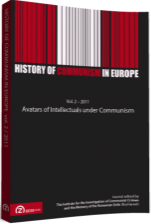
Keywords: artists; political power; Uniunea Artiştilor Plastici (Romanian Artists’ Union); Union leadership
This article explores the relationship between artists and the communist political power through a case study of the way in which Uniunea Artiştilor Plastici (Romanian Artists’ Union) functioned from 1965 to 1975. Based on the research at the Romanian Artists’ Union’s archive (Central Historical National Archives, Bucharest), this article seeks to map out the twisted and ambiguous relationship that developed between artists and the Ceauşescu regime, during a period of increased ideological pollution and scarcity of resources. Several issues will be addressed in this article. Firstly, it will look at artists’ reaction to the regime’s early attempts to win them over and to consolidate its power by using a mixture of captatio benevolentiae, persuasion and coercion techniques. More precisely, the article will look at how artists received and responded to the overt use of nationalist discourse in the field of fine arts, the augmentation of acquisition funds and the diversification of institutions involved in this process immediately after 1965. Secondly, this essay will explore the actual tools and mechanisms used by the Ceauşescu leadership to mold art production in line with the State’s cultural policy. More precisely, starting in the 1970s, the stricter ideological control and the cuts in funding led to deep transformations inside the Union. This line of investigation will analyze the new policy for exhibition, the requirements and making of thematic exhibitions, distribution of funds or of other advantages (loans, personal exhibitions, trips abroad, etc), which contributed to a polarization of the Union’s members and to an increased competition for limited resources. Thirdly, the article will look into the transformation of the Union’s leadership into an elitist body that started to monopolize resources and distribution of “privileges”, a practice that ultimately led to vocal protests from rank and the members of the Union.
More...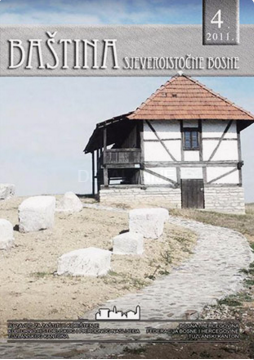
Keywords: Investigative works; geodetic survey; geological and geomechanical soil tests; microscopic analysis of stone; archaeological investigations; church; Gomiljani.
Investigative works were carried out at the site of St George’s church in Gomiljani with a view to obtaining the information and initial parameters needed for later stages of the project for the repair, conservation and reconstruction of the church. The cumulative cost of these works was 30,808.20 KM, financed from the budget of the Federation of Bosnia and Herzegovina as part of the Intervention measures to protect national monuments funded from the state budget. The works carried out, in association with and with the agreement of the Zahum Herzegovina and Primorje Eparchy and the Institute for the Protection of the Cultural, Historical and Natural Heritage of Republika Srpska, were a) a geodetic survey of the site in horizontal and vertical control, a survey of the remains of the church walls, cruciform tombstones and other graves and of the stone wall around the churchyard, and drawing a site plan; b) geological and geomechanical tests of the soil characteristics, and a macroscopic and microscopic analysis of the building stone, mortar and plaster; c) systematic archaeological investigations of the church and its immediate surroundings.
More...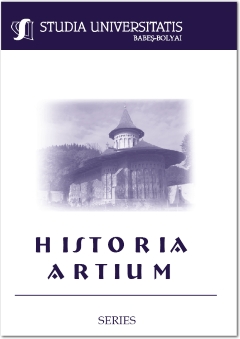
Keywords: country-houses; Historicism; architectural history; Bonţida; Răscruci; Borşa; Jucu de Sus; Beliş; Antal Kagerbauer; the Bánffy family; the Teleki family.
Historicist Country Houses from the Former Cluj County. The topic of my study consists of country houses that were built or substantially transformed between 1840 and 1918 in the former Cluj county, a wealthy and important Transylvanian county of the time. In the period under research a total of eight country houses were built in this county, among which the most important ones were concentrated around the city of Cluj. These are the residences from Borşa (Kolozsborsa), Răscruci (Válaszút), Bonţida (Bonchida) şi Jucu de Sus (Felsőzsuk). The first three of them belonged to the famous Bánffy family. The country houses from the nearby localities of Gilău (Gyalu) and Vlaha (Magyarfenes) were situated south-west to Cluj, the country house from Dragu (Drág) was in the region of Sălaj (Szilágyság), and the one from Beliş (Jósikafalva) was isolated in the Gilău mountains, in the south-west corner of the county. Apart from these buildings, the noble residences from Ciucea (Csucsa) and Zimbor (Magyarzsombor) appear in the public opinion as country houses, but in my view they can be considered only manor houses or villas. In order to dissolve these contradictories, these two buildings are presented in the first subchapter of this study.
More...
The name of Jacobus Tollius (1630-1696) does not ring a bell nowadays, even though the Dutch traveler was a well-known and esteemed philologist and alchemist in his life. He visited Hungary twice. His first journey took place in 1660. Due to a coincidence, this time he enjoyed the hospitality of Miklós Zrínyi at Csáktornya, where he found „beautiful buildings, dazzling furniture, great comfort, cleanliness and an erudite family”. The first destination of his second journey in 1687 was Pozsony, then he visited some mining towns in Upper Hungary stopping in Győr, Komárom and Érsekújvár and finished his trip in Buda. The journey is important because of its peculiar three-dimensionality. The first remarkable dimension was the timing: Tollius arrived in Buda only six months after the expulsion of the Ottomans, and he traveled through Upper Hungary when it was under kuruc control. The fairly incomprehensible, eclectic labyrinth of everyday life must have been fascinating for the foreign traveler. On the other hand, Tollius was a traveler, who supplemented his empirical impressions and observations, often of subtle details, with the possibilities offered by oral history. Third, he was a notable scientist in the history of mining and chemistry. This is why Tollius’ letters are an enjoyable read. It is not an accident that – besides the works of British traveler Edward Brown, a contemporary of Tollius who had also visited the country a few years earlier – Jacobus Tollius’ works are one of the most important sources used in 18th-century European, but mainly French, dictionary literature for drawing the image of Hungary.
More...
Keywords: the Holocaust; Jews–Poles 1939–1945; hiding on the Aryan side; help and rescue; the Catholic Church and the Jews 1939–1945
In the three subsequent issues of The Bulletin of the Jewish Historical Institute of 1959 and 1960, the diary of Krystyna Modrzewska (Mendalbaum), submitted to the Central Jewish Historical Commission in 1947, was published. The first part, which opens with the outbreak of the war and ends with mass executions of the Jews in a forest near Krępiec, outside Lublin in spring 1942, was massacred by the censorship. The author writes, among other things, about hiding in the nunnery of the Congregation of Sisters of the Bethany Family outside Lublin, and she harshly judges the relations there. It turns out that the communist censor eliminated the record concerning critical views on the nuns’ mentality, their intellectual and moral standards. The censor did not approve of the comments about nunnery’s everyday life and church religious rituals, the clergy’s hypocrisy and the increasingly materialistic views of this group. The censor’s interference in the field of the author’s religious experience is even more acute as Modrzewska’s diary rates among a small group of testimonies describing adult Jews hiding in monasteries and convents. All those fragments has been restored in the current edition and placed in the context of the whole. Reading the integrated fragments of Modrzewska’s diary about hiding in the convent, it is worth pondering why a person (who had been baptized as a student of the university of Bologna, treating this ceremony very seriously, not opportunistically) experiences such a sheer disappointment in the convent near Lublin.
More...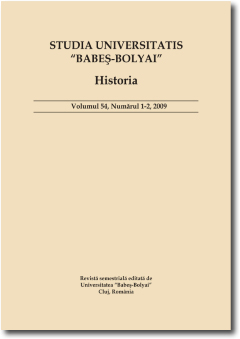
Keywords: medieval last wills and testaments; nobles; Transylvania; pilgrimages; donations.
Established since the earliest of times, originating in the written document itself wills have always been legal documents regulating patrimonial rights and intergenerational relations due to the possibility of transmission of goods and material and spiritual values. A will sanctions socially and culturally regulated rights and obligations which have been recognized as social norms ensuring civilized functioning. Psychologically it is also a very complex document which reflects the profoundly human nature of the sense of intimacy in relations between ancestors and descendants. In the opinion of Serge Briffaud “the existence of a will is based both on ambiguity and balance”. The first is the result of putting side by side within the same text seemingly irreconcilable prescriptions of temporal and spiritual nature. The second, namely the balance, was provided by a certain solidarity between the two parties, an agreement that needed to be analogically added to the relation when the document was drawn up. Thus, through the testament, the dying person finds the chance to satisfy a double aspiration: salvation of his/her soul and to preserve his/her possessions on this earth. The article hereby intends to detect the medieval nobleman of Transylvania in exactly this state, as a testator having two concerns: care for his own soul, on the one hand drives him to make pious donations, while responsibility for his beloved, on the other hand, drives him to donations offered to his relatives and other people. From among the dispositions of the wills aiming to ensure redemption only those referring to pilgrimages shall be presented. Also the other means by which noblemen cared for their soul and the soul of their beloved and also for the possessions gathered in their lifetime, measures considered to be complementary to the wills will be examined.
More...
Keywords: Transylvania; family church; Vir Dolorum; donors; representation of the self.
This analysis focuses on an early fifteenth century cycle of wall paintings from a small church in Transylvania. This belonged to a Hungarian family of nobles called Apafi. They were members of the lesser nobility meaning that they were not very rich but were well connected to elite members of the Hungarian kingdom. The goal of this article is to study a peculiar composition situated in the lower area of the sanctuary on each side of an image of Christ Vir Dolorum. This row of frescoes includes representations of saints as well as several characters that seem to be laymen. Although these figures do not conform to the established patterns of donor representation, they are comparable, at least in message, to self-representations occurring in family churches of members of the higher nobility of the land such as Jolsvai and Drugeth.
More...
Keywords: women; testaments; offerings; memorial art; liturgy; patronage; Transylvania.
In the last few decades research has focused on the theme of memoria, a manifold phenomenon which pervaded the everyday life of medieval men and women. In the conception of that time, the remembrance of the deceased was intimately related to his/her personal salvation. Therefore, medieval men and women alike invested a significant share in memorial programmes intended to ensure their presence even after death in the society of the living. The latter, through prayers and suffrages, were supposed to help the dead in their purgatorial journey and in the quest for redemption. People already made provision during their lifetime for the hereafter, and strove for viaticum: an accumulation of good deeds that could likewise ensure good memory, and eventually the reward of eternal life. Gifts made to religious institutions and individuals were considered instrumental for triggering remembrance. The expected counter-gifts consisted in masses and liturgical services, prayers pro anima and suffrages for a determined period of time or for eternity. Memoria, closely related to personal identity, was largely incited by visual stimuli or props: inscriptions bearing the name of the deceased, donor portraits, coats of arms, tombstones, epitaphs etc. This study aims to analyse some late medieval Transylvanian evidence from the point of view of memoria. The main purpose is to identify and emphasise specific strategies (related to gender, or distinct social classes) adopted by Transylvanian laymen and (particularly) women in order to ensure their remembrance. The study relies upon different categories of sources, both written (wills, dona pia recorded in documents, registers of benefactors etc.) and visual (donor portraits, heraldry, monumental or public inscriptions, funeral slabs etc.).
More...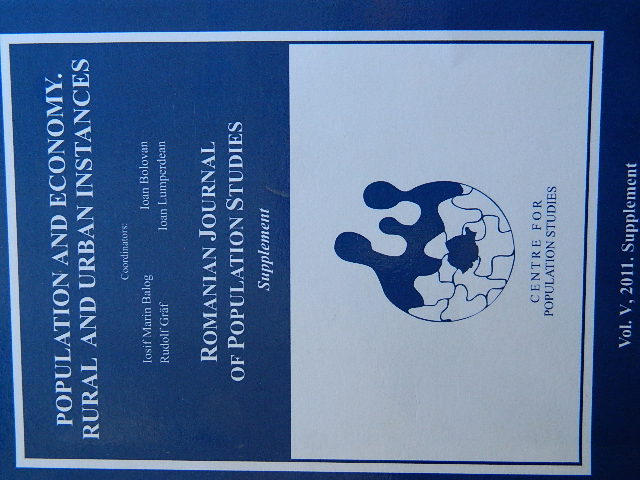
Keywords: end of peasantry; traditional peasant type village; rural individualism, rural loneliness; survival strategies.
Based on a diary, I will try to reconstruct some fragments of the everyday reality in the collectivized village during communism. This contextual methodological perspective, of local features analysis, is important for surpassing the inherent epistemological precariousness shaped through a post-festum analysis, so specific for social and human sciences. It does not eliminate subjectivism, there is no doubt about that, but it does significantly reduce it. The analysis suggested below attempts to capture the characteristics of the rural daily life during the last period of Romanian communist society based on the following directions: the dissolution of the traditional peasant type village and the end of peasantry, the appearance of new social value systems, the de-structuring of rural collectivism, the rupture between urban and rural and between the social actors bearing this rupture, the effects of the eighties’ economical crisis upon rural and urban areas. The premise I use for starting this analysis is that the communist period cannot be judged by reductionist labeling of nominal type; it has to be approached from inside its own specificity, by attempting to reconstruct the mechanisms of social articulation, which generate new phenomena, having their own specificity, some of them continuing during post-communism.
More...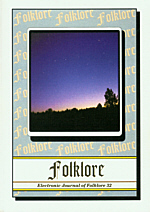
Keywords: year; chronology; Besermian; week; narrative lore; folk calendar; traditional holidays; feast days; nychthemeron
The traditional chronology of Besermians is a constantly developing and transforming system subject to various internal and external influences. As a part of a culture’s worldview, time determines the rhythm of nature, lore culture, economic activities, and cycles of human life. A day covers the period from sunrise to sunset, a night the period from sunset to sunrise. Each part of the day was given a name. Midnight and noon were considered dangerous and special times. Weekdays were seen as positive (easy) or negative (difficult). The positive or negative nature of the day may have influenced the outcome of the work undertaken. The yearly system was based on the change of seasons. The change of seasons had a significant influence on the entire economic life, which, in turn, determined the community life, including family and practical rituals. Until the adoption of mechanical clocks, time has been calculated with various means at people’s disposal. Observing the movement of the sun and the moon has been important. The Besermians havemerged several traditional feast days, the tradition of commemorating the dead and other festivities with the Orthodox church calendar.
More...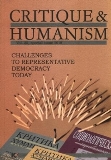
Keywords: city square; legitimation resource; socialist Sofia; socialism; legitimizing symbol; ideology
This paper analyzes one monumental city square in Sofia (Alexander I, later Ninth of September) as one of the key components in the (re)arrangement of the central urban space after the advent of socialism in Bulgaria in 1944. Though focused on the socialist period, the research outlines also the development of the site as a palatial square in the previous monarchic period as a plane of historical comparison. The analysis treats the square not merely as an artifact of urban planning but rather as a stage and a frame – and hence, a legitimizing symbol – of a historically particular political culture (state socialism), as a material manifestation of its ideology and a physical field of its public rituals. Therefore, the research scope is not limited to the square itself but covers also the urban development of its wider spatial context, the political centre of Sofia, and the architectonic structures around which public dynamics in the city centre gravitated spatially and symbolically. In regard to the architectural implementations in this fragment of the city space, the highlight is the Mausoleum of Georgi Dimitrov and special significance is placed on the spatial tension and ideological opposition between the mausoleum and the former royal palace as a manifestation of the clash between two antagonistic political regimes (monarchy and people’s republic). Since the analyzed urban topoi were constitutive elements of the governmental centre of Sofia, the central urban space delineated by them is perceived as a visualization of power, and the architectural projects for its reconstruction – as expert solutions of a task that had primarily political importance rather than as autonomous creative ideas.
More...Abstract. In many Western European countries there is a vital and successful triangle in the book production process: authors, agents, and publishers cooperate in order to successfully reach the main target, that of selling cultural products. This paper looks into the origins of the profession, current roles and activities and the importance of literary agents in England and the USA in order to provide the background to the discussion of the crisis in Romanian literary agenting. Firstly, we provide the historical and cultural background to the problem in Romania and make some preliminary remarks concerning the transition from communist to post-communist aspects of cultural production. Secondly, we present the aims and scope of the study, as well as the methods and data used. Thirdly, we expound the origins of the literary agent profession, as well as its effects in the area of cultural production. Fourthly, we describe the roles of literary agents, the main aspects of the relationship author – agent – publisher, and the new trend of self-agenting. Then, we explore some features of literary agenting in the USA and England. Finally, we investigate the status of the profession in Romania, where the writer is sometimes an agent, editor, redactor, reviser, seller, and distributor of his own books. Possible solutions to the difficulties this investigation discusses are considered, as well as the incipient efforts of some literary agencies to publish Romanian authors abroad and thus boost the visibility of Romanian literature in foreign countries.
More...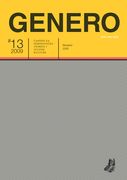
Keywords: estrada; neofolk; female body; transition; nationalism; LGBT; melodrama; female audience
In this paper I analyze the position of female body in the space of Serbian music show business, popularly called estrada. I see estrada as a complex phenomenon; a culturally specific, market oriented social space that reacts to and interacts with the processes of social, cultural and economic transformation of the Serbian society at present. The body of a female folk singer is estrada’s main representative. I use this body to explore the relationship between estrada and Serbian nationalism, and how estrada engages in construction of various national identities in Serbia, taking as a historical reference the year 2000 and the official end of Slobodan Milošević’s era. To demonstrate the complexity of these identities, I explore the role of a female singer’s body in the construction of two seemingly paradoxical identities: the national and the gay one. Finally, through the relationship of the singers with their female audience I continue to examine the limits of estrada’s possible subversiveness against the dominant patriarchal ideology.
More...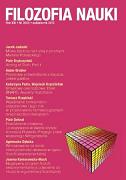
Keywords: aims of science; truth; explanation; representation; fiction; belief imitation
In scientific practice theories are allowed to posit objects believed to be fictitious. Some philosophers undermine the legitimacy of scientific practice in this respect, which leads to a philosophical problem. Various solutions have been advanced. The paper argues for a certain version of fictionalism. Since the objections against positing fiction are objections against the practical wisdom of science and are neither compelling nor easily answerable, it is suggested in the paper that if there is a way out, it is mainly a way of revealing hidden motivations by looking anew at the scientific practice from the historical perspective, one of the hopes being that it will enable us to reveal some hidden burdens of history. This suggestion determines the main line of argumentation.
More...Keywords: M14; L20; D03
The current study dwells upon Edgar Schein’s original framework for exploring organizational culture by classifying its elements to three levels. Important directions of model’s elaboration are identified and analyzed. The last have been undertaken by different researchers in the last three decades, based on individual’s necessities, involvement and experience with the application in practice of this model. Viewing Schein’s model as a hologram is recommended as a way to dissolve subjectively identified by different authors issues or ambiguities in this framework. Thus, a contemporary, useful and richer “snapshot” of this model is proposed for use in the organizations during these turbulent times when cultural intelligence capabilities come of greater importance for their successful market performance.
More...Keywords: JEL: F36; H25
The paper discusses the development of VAT in Europe since its emergence, based on the achievements of financial and macroeconomic theory and using rich legal and statistical data. The main axis of the analysis is the controversy between VAT unification and the remaining differences in various countries. Special attention is paid on Eastern European countries (mainly EU-11) including Bulgaria.
More...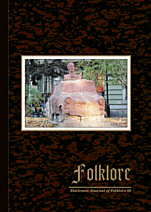
Keywords: Bahktinian conception of the self; fatana; folk performance; Gujarati women's songs; Indian-American folklore
More...